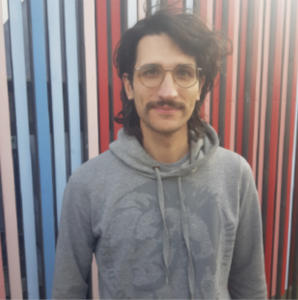Nicolas Cerardi
PhD Student

| Contact Information | |
| E-mail: | nicolas dot cerardi at cea dot fr |
| Phone: | |
| Office: | 278 |
| Affiliation: | IRFU/DAp-AIM |
| Supervisors: | Marguerite Pierre, François Lanusse |
Research Interests
I am a third year PhD student at CEA Saclay/AIM/Cosmostat lab, supervised by Dr Marguerite Pierre and Dr François Lanusse. My field is cosmology with X-ray galaxy clusters. Throughout my PhD, I have been working on different aspects of cluster cosmology:
- ML techniques for the forward model and cosmological analysis of cluster samples. The modelling of a selected cluster sample - and its observable properties - relies on empirical scaling relations as well as on a halo mass function. In addition for its need for a proper calibration, the traditional forward model also suffers from considering perfect clusters. A more physical modelling would involve computing hydro-dynamical simulations that well reproduce the variety of clusters (e.g. mergers, relaxed, cool-cores, AGN-contaminated, differents impact of feedback...). However, the simulations are too expensive to be used for cosmological inference. Here, I use ML techniques to develop cheap surrogate simulations. This enables the use of Simulation-Based Inference (SBI) for cluster cosmology. I hence developped a full SBI pipeline that generate X-ray detected cluster catalogues just as fast as the simpler traditional forward model.
- Cosmological forecasts for the future X-ray telescope ATHENA. In ~2037, ESA is expected to launch XMM-Newton's successor, the Advanced Telescope for High-ENergy Astrophysics (ATHENA). Its great technical characteristics make it ideal for conducting deep X-ray surveys, and promise to detect galaxy clusters in X-rays at much higher redshift than previous telescopes. I estimated the number of clusters to be detected with ATHENA, and showed that by its launch, ATHENA will reach lower mass detection limit than contemporary observatories (such as Euclid, CMB-S4), including at high redshift. I then provided cosmological forecasts for ATHENA surveys and showed that high redshift galaxy cluster carry important information on the Dark Energy equation of state, that break the degenerascies observed for low redshift cluster samples
- Spectroscopy of clusters detected in X-ray surveys. Cosmology with X-ray clusters requires to estimate the clusters' positions along the line of sight, to break the degenerascies between Luminosity, Temperature and Mass measurements. Although telescope time-consuming, spectroscopic follow-up is the most precise method to estimate redshifts. As a member of the XXL Consortium, I firstly dealt with ESO telescopes to prepare observations (at VLT/FORS2), to reduce data (form NTT/EFOSC2) and confirm X-ray clusters. I also had the opportunity to join ESO headquarters in Garching as an Early-Career Visitor for the preparation of the
- spectrograph.

